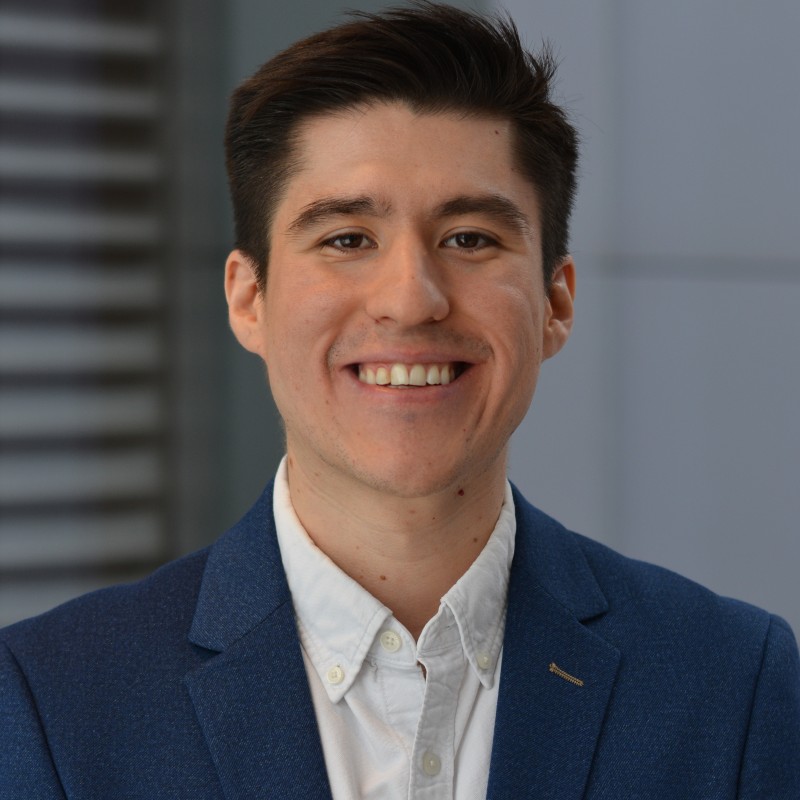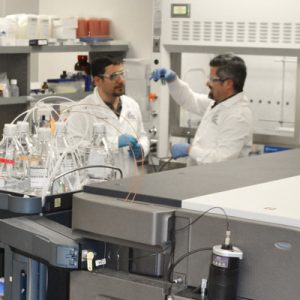OICR researchers are exploring potential therapeutics for a rare but aggressive pediatric brain tumour called diffuse intrinsic pontine glioma (DIPG).
A series of innovations by OICR scientists could one day offer hope to families facing one of the most devastating childhood cancers.
Researchers in OICR’s Drug Discovery program, working as part of a collaborative open source program under the umbrella of M4K Pharma, have developed a group of promising compounds that target a vulnerability in diffuse intrinsic pontine glioma (DIPG), a rare but aggressive pediatric brain cancer that is fatal in 98 per cent of children diagnosed with the disease.
DIPG is so devastating in part because it is difficult to treat. Surgery can be dangerous because tumours are located on the brain stem. Clinical trials of chemotherapeutic agents have failed to improve survival beyond the standard radiation therapy. Developing drugs against DIPG is also challenging because therapeutics need to pass through the blood-brain barrier.
Consequently, the introduction of a compound called M4K2009 developed by OICR, the Structural Genomics Consortium (SGC), Charles River Laboratories (UK) and other partners operating as part of M4K Pharma has generated hope that it could eventually become a drug candidate.

M4K2009 is designed to inhibit a mutated protein called ALK2, which is believed to play a key role in the development of DIPG. Initial tests showed that M4K2009 had two advantages over previous ALK2 inhibitors: it effectively permeates the blood-brain barrier and it is highly selective – meaning it inhibits ALK2 without also inhibiting other proteins in the ALK family, thereby avoiding unwanted side effects.
“The compound performed really well,” says Dr. David Smil, Principal Research Scientist in OICR’s Drug Discovery program and one of the lead researchers on the project. “Now we’re interested in seeing if it is suitable to advance into the clinic.”
As part of those efforts, researchers have been working to improve and refine M4K2009. PhD candidate Hector Gonzalez Alvarez led a project to ‘rigidify’ the compound. This resulted in new compounds that penetrated the brain even more substantially than M4K2009 and were up to five times more selective, as reported in a recent Journal of Medicinal Chemistry paper.
“We still have more testing to do, but the initial results are promising,” Alvarez says.

OICR and SGC researchers are now entering the next phase of testing to see if M4K2009 or any related compounds could make good clinical candidates.
They’ve also just launched a side project – funded through OICR’s Pre-Clinical Acceleration Team Awards – to see if their compounds can be helpful in diagnosing DIPG.
Because M4K2009 and similar compounds permeate the brain so well, they could potentially be harnessed to develop ‘radiotracers’ that bind to a tumour and make its exact size, shape and location visible through an imaging machine called a positron emission tomography (PET) scanner.
“This could help visualize to what extent a DIPG tumour has infiltrated the brain stem and help determine the patient’s prognosis,” Smil says.
Harnessing PET imaging could also help researchers understand more about the biology of DIPG and how effective their compounds are at treating it.
Whether or not M4K2009 and related compounds ultimately become a drug, OICR and SGC have made significant strides in understanding how to treat a disease that has received little attention from other drug discovery programs.
DIPG and other rare cancers are sometimes considered ‘risky’ in drug discovery, because their potential market may not be big enough to recoup the costs of developing drugs. But OICR was created to address unmet clinical needs and has therefore prioritized research into DIPG and other rare and hard-to-treat cancers.
“No matter how rare a disease like DIPG is, there are always going to be families suffering because of it,” Alvarez says. “That’s why we’re grateful to be working on this project.”


